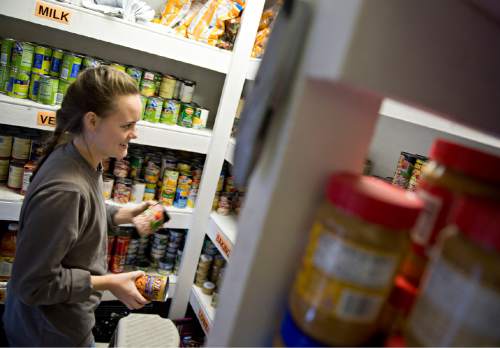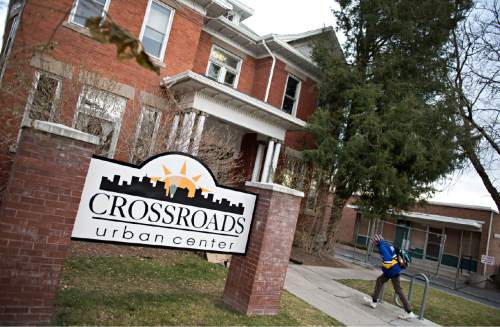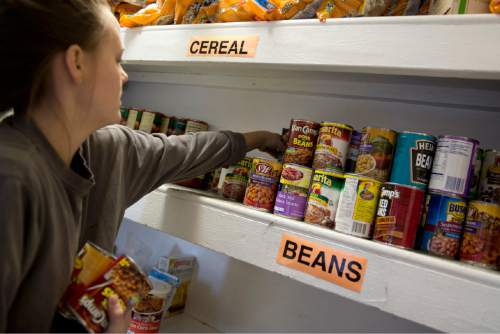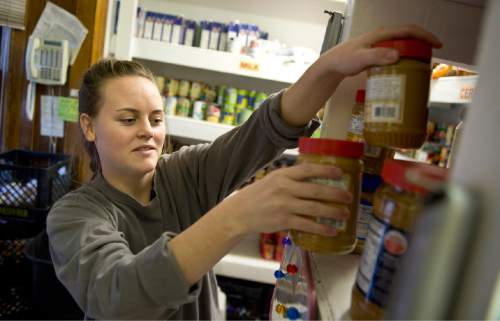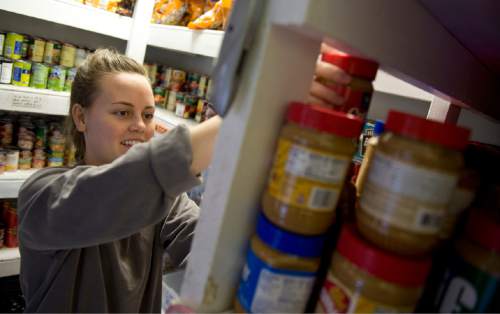This is an archived article that was published on sltrib.com in 2014, and information in the article may be outdated. It is provided only for personal research purposes and may not be reprinted.
City officials who deal with poverty at street level every day across America are bracing for potential cuts in social programs as a Republican-dominated Congress takes over next month.
A new report on hunger and homelessness underscores those concerns, painting a grim picture of life on the lower rungs of the economic ladder — despite a recovering economy.
Although progress has been made on some fronts, city leaders fear food stamps could be pared back and worry that federal funding for housing might not keep pace with rising costs.
The report, released Thursday by the U.S. Conference of Mayors, surveyed 25 cities — including Salt Lake City — and found that 21 of them reported increases in requests for emergency food during the past year.
Utah's capital was among 16 cities where some needs for emergency food went unmet.
More than half the cities reported a jump in homelessness, although it went down in about a third of the cities surveyed.
Despite progress in addressing homelessness, the report states that challenges remain: "The overall economy is starting to recover, but this improvement does not appear to be penetrating lower-income populations."
—
Ups and downs • In Salt Lake City, the number of homeless people has remained at 2005 levels, about 1,360. But resources have grown in Utah and no one was shut out of an emergency shelter last winter due to overcrowding.
Chronic homelessness is down sharply in Salt Lake City.
When it comes to hunger, the report cites "more jobs" at the top of its list of action items, followed by increasing the Supplemental Nutrition Assistance Program (SNAP) — or food stamps — now on the chopping block in Congress.
In November 2013, food-stamp benefits were cut by about $30 per month per family. The U.S. Conference of Mayors and others, including Gina Cornia of Utahns Against Hunger, fear the upcoming Republican Congress will make deeper cuts, particularly to able-bodied adults without dependents.
Across the cities surveyed, 58 percent of those requesting emergency food were families. Forty-three percent requesting food were employed, 21 percent were elderly and 9 percent were homeless.
The cities reported an average increase of about 7 percent in the number of pounds of emergency food distributed in the past year. Together, the resources within those 25 municipalities gave out 557 million pounds of food at a cost of $324 million.
Despite that, the report said, "21 percent of the people needing emergency food assistance did not get it," due partly to reductions at emergency kitchens and food pantries.
All but one of the surveyed cities expects to see requests for emergency food rise in the coming year.
In about three-quarters of the cities, pantries reduced the number of times each month a family could visit. In 16 of them, pantries and kitchens had to turn away people for lack of food.
In Salt Lake City, the Crossroads Urban Center pantry and Hildegard's Pantry don't expect to cut back on emergency food assistance in 2015.
At Crossroads, patrons can come for food six times in a year, said Rachel Fischbein. Each visit provides a three-day supply of food per person. Hildegard's allows each person or family to visit twice a month and also gives out three days' worth of food per person, said Lydia Herrera.
The mayors' report quoted city officials warning that cuts to SNAP would reduce availability of food to children and the elderly and would boost demand on food pantries and other resources.
"The impact of cuts in SNAP benefits that have been proposed [in Congress] and the inability of food-assistance programs to meet the increased demand that would result was identified by most cities as the biggest challenge they will face addressing hunger in the coming year," the report said.
—
Homelessness • Based on the "point-in-time" estimate of homeless people on a single night in January 2014, the federal Department of Housing and Urban Development reported that 578,424 people were homeless in the United States. Of them, 63 percent (more than 360,000) were individuals and 37 percent were in homeless families.
The 194,302 homeless children and youths in this year's count represent about a third of all homeless people. Among all homeless children and youths, 76 percent (or nearly 150,000) were part of a homeless family.
The HUD report also cites longer-term progress in addressing homelessness: Since 2007, an 11 percent decline in the number of people homeless on a single night, and a 32 percent drop in the number of homeless people unsheltered.
In Utah, homelessness increased from 11,970 in 2007 to a high of 16,522 in 2012. In January, it fell to 13,621, according to the Utah Department of Workforce Services.
In the cities surveyed by the mayors, homelessness overall was up 4 percent from last year.
City officials identified lack of income as the leading cause of homelessness among families with children.
Although unemployment is down, many workers earn less than they did before the recession, said Santa Barbara Mayor Helene Schneider, head of the U.S. Mayors' Hunger and Homeless Task Force.
Affordable housing also was cited as a cause of homelessness, along with substance abuse and mental illness.
About 30 percent of homeless adults were severely mentally ill, according to the report. Some 17 percent were physically disabled and 16 percent were victims of domestic violence. About 19 percent of homeless people are employed, the survey said.
During the past year, 22 percent of homeless people seeking assistance did not receive it in the 25 cities surveyed. That was due largely to lack of beds at emergency shelters.
Officials in about half the cities said they expect the number of homeless families to go up during the coming year. Although federal funding to fight homelessness rose slightly in 2014, resources to assist the homeless could be reduced by the upcoming Congress, according to officials from 62 percent of cities surveyed.


